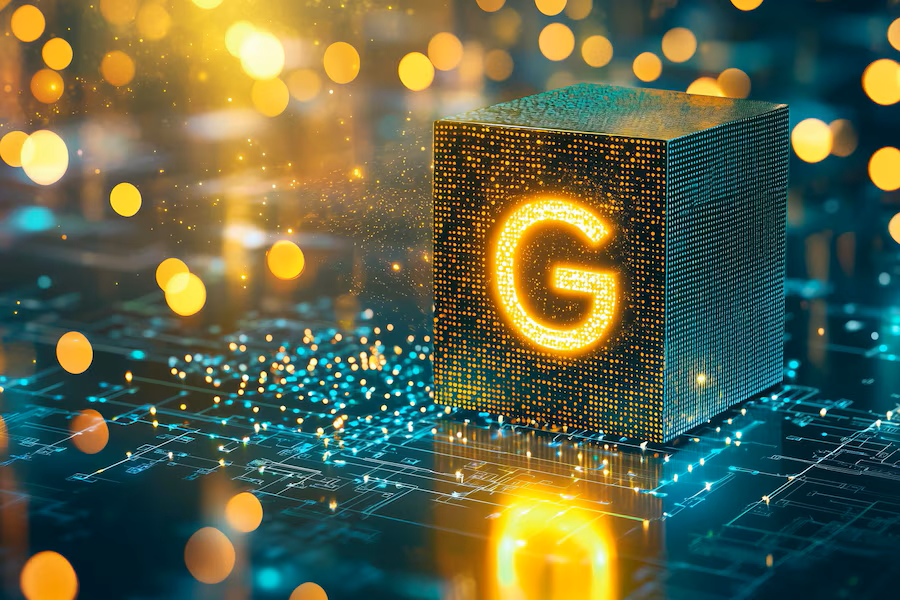Artificial intelligence (AI) has changed the way technology interacts with the world. Within the broad field of AI, there have been two very interesting concepts: generative AI and multimodal AI. Although both contribute to the rapid development of AI applications, their objectives, strategies, and applications are very different. In this article, we will explore the differences between generative AI and multiple AI, examining their roles, applications, and how they are reshaping the tech landscape.
Google Generative AI is a prime example of this technology at work. The company uses advanced algorithms to create human-like messages. Virtual picture Or artificial languages in this example, Generative Adversarial Networks (GANs) and GPT (Pre-trained Generative Transformers) . Work on models that use electrical transformers.
Important features of Generative AI
Content Creation: Generative AI specializes in creating new content. Including writing content creating art or composing music
Deep learning models: Use advanced neural networks such as GANs, Variational Autoencoders (VAE), and transformers to learn from large data sets…
Application:
Message generation: Tools like ChatGPT can create consistent and context-sensitive message responses.
Graphics: Systems like DALL-E produce highly detailed and imaginative graphics.
Sound Synthesis: AI can create synthetic sounds or compose original songs.
Game Development: Generative AI helps design game environments, characters, and storylines.
The strength of generative AI lies in its ability to model and expand on the data it has been trained on. This makes it possible to imitate human creativity in various domains…
Understanding Multimodal AI
Multimodal AI, on the other hand, focuses on integrating and processing multiple data sets simultaneously. This means that different sources, such as text, images, audio, and video, can be analyzed, understood, and combined to create meaningful designs.
The rise of multiple AIs is driven by the need to create more inclusive and diverse systems. Instead of operating within the confines of a single data model, multiple AIs bring together diverse sensory inputs. It allows for stronger decision-making and contextual understanding…
Key features of many AIs
Combining modalities: Multimodal AI seamlessly combines data, such as combining an image with descriptive captions or interpreting audio with corresponding text
Complex understanding: Enables a deeper understanding of events through the use of multiple inputs.
Request:
Virtual assistants: Google Assistant and other AI systems process voice commands (audio) and return information based on text or images.
Healthcare: Multimodal AI can provide accurate diagnosis by analyzing medical images along with patient records.
Self-Driving Vehicles: Autonomous vehicles use multiple AIs to combine data from cameras, LIDAR sensors and GPS to safely navigate.
Social media analytics: Multiple AIs analyze videos, images, and text to understand user behavior and trends.
By bridging the gap between different types of data, many AIs provide a holistic approach to problem solving and decision making.
Generational AI vs. Multimodal AI: Basic Differences
Although both are subfields of AI, generative AI and multimodal AI serve different purposes. The main differences here are:
- The purpose
Generative AI: Its purpose is to innovate. It focuses on creating unique content, be it text, images, or other media.
Varieties of AI: It attempts to integrate and analyze various forms of data for improved understanding and decision-making.
- Data processing
Generative AI: works primarily with one data genre at a time (e.g. text or images) but can extend to others depending on the model.
Multimodal AI excels at processing and integrating different types of data simultaneously.
- Usage
Generation AI: Used in creative industries, games, and virtual environments to create new content.
Multimodal AI: It is mainly used in complex real-world situations where different data inputs need to be combined, such as autonomous driving or advanced medical diagnosis…
- The main arrangement
Generative AI: It often relies on GANs, Transformers, and Autoregressive models. To create content
Multimodal AI: Use an architecture that can handle multiple inputs, such as cross-modal transformers.
Interactions between reproductive AI and multimodal AI
Although generative AI and many AIs have different functions, they can be combined to unlock powerful capabilities.. For example, a multi-generational AI system can contain objects related to different processes. A prime example of this is models that generate images based on textual descriptions or vice versa. Google Generative AI has shown progress in this area. This leads to more accurate and contextual results.
Real-world examples of integrated applications
Creative Services: Google Generative AI combined with multiple AIs can create marketing campaigns by matching text, images, and videos based on a single input.
Education: AI tools can combine text-based narration with interactive audio-visual feedback to create an immersive educational experience.
Healthcare: AI structures can create photographs of clinical conditions alongside textual content-based remedy suggestions.
Entertainment: Virtual reality (VR) and augmented reality (AR) stories advantage from AI that creates more than one codecs by way of combining pics, audio, and synthetic narratives.
Challenges and obstacles
Both generative AI and multimodal AI face their very own challenges:
AI-enabled:
- Ethical concerns approximately deep faxing and incorrect information.
- Increased technical expenses for education and centers.
- Risk of bias in built facts.
Nutshell
In summary, generative AI and multimodal AI represent two exclusive but complementary strategies inside the discipline of artificial intelligence. While generative AI makes a speciality of content material advent, multimodal AI makes a speciality of integration and processing various sorts of information. Their specific strengths make them invaluable in a huge variety of applications.
And this fusion creates a future where AI structures are innovative and smart based totally on context. And while these technologies mature They will certainly reshape the manner we engage with the era and the arena round us.
If you are one of those people who loves reading ai and ml related news updates and trendy blogs then robotsintelli is something for you.


